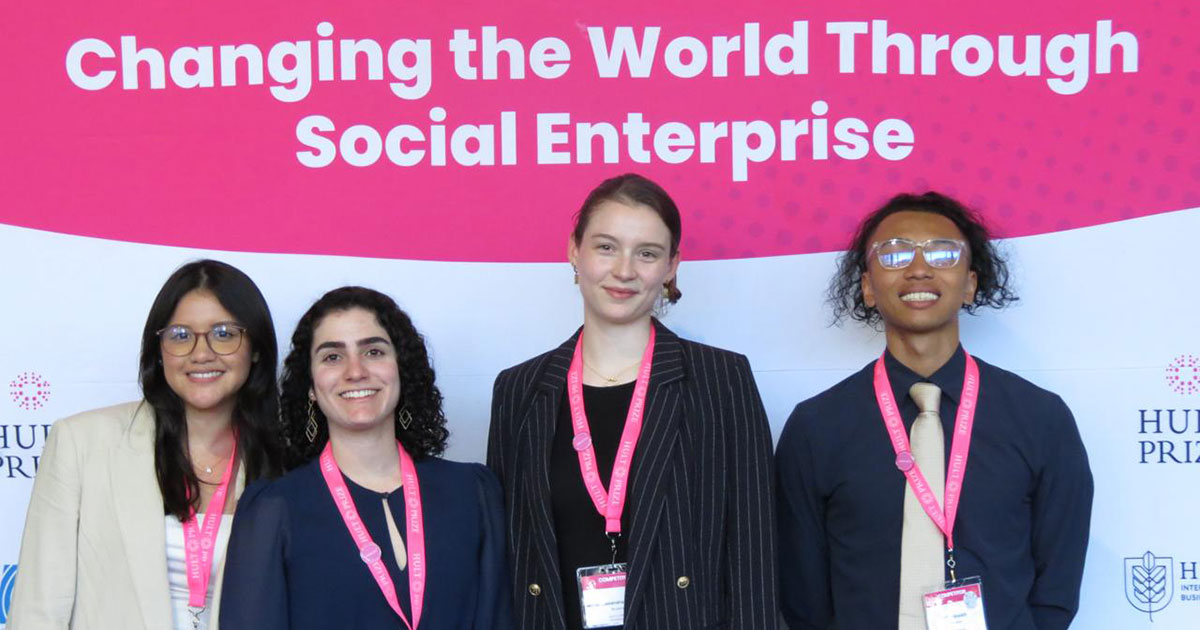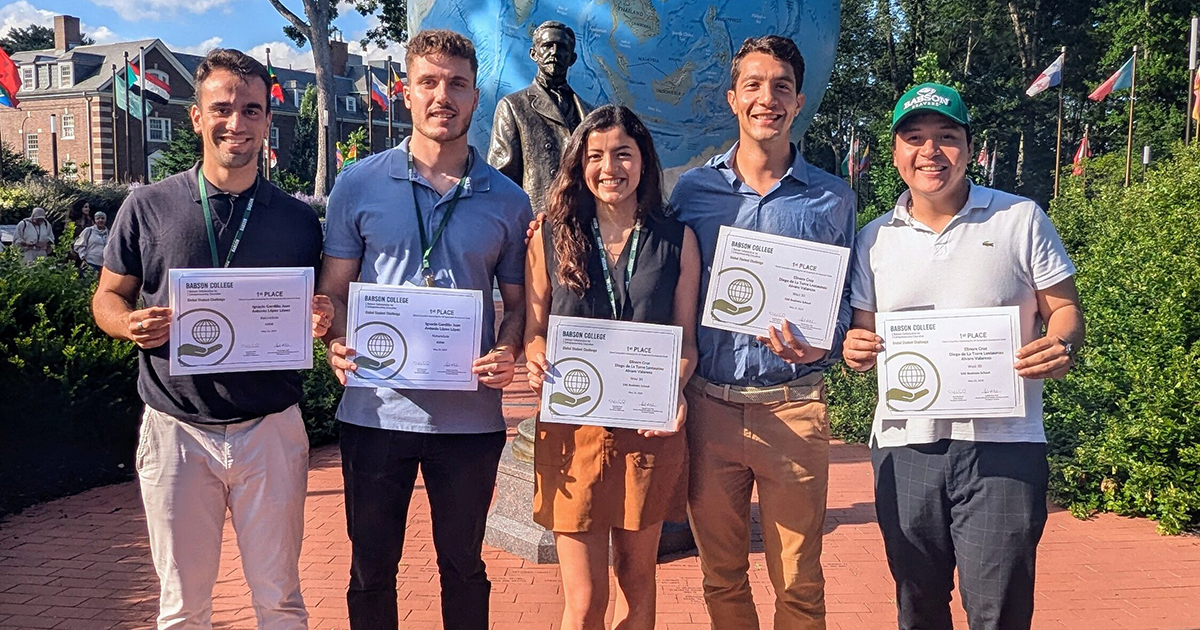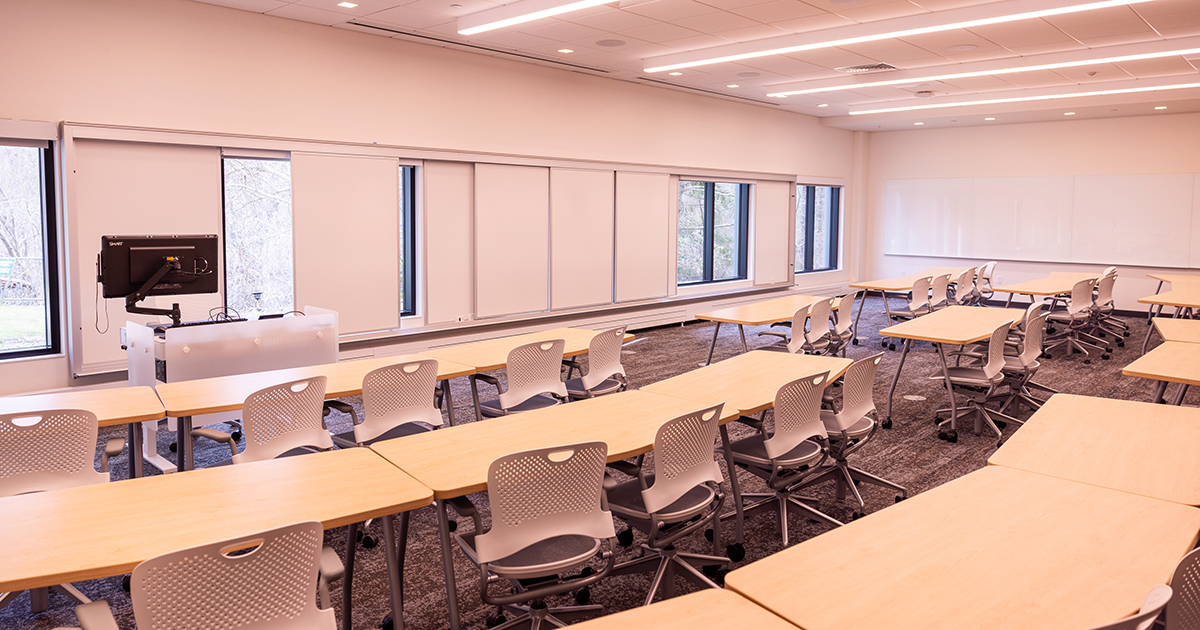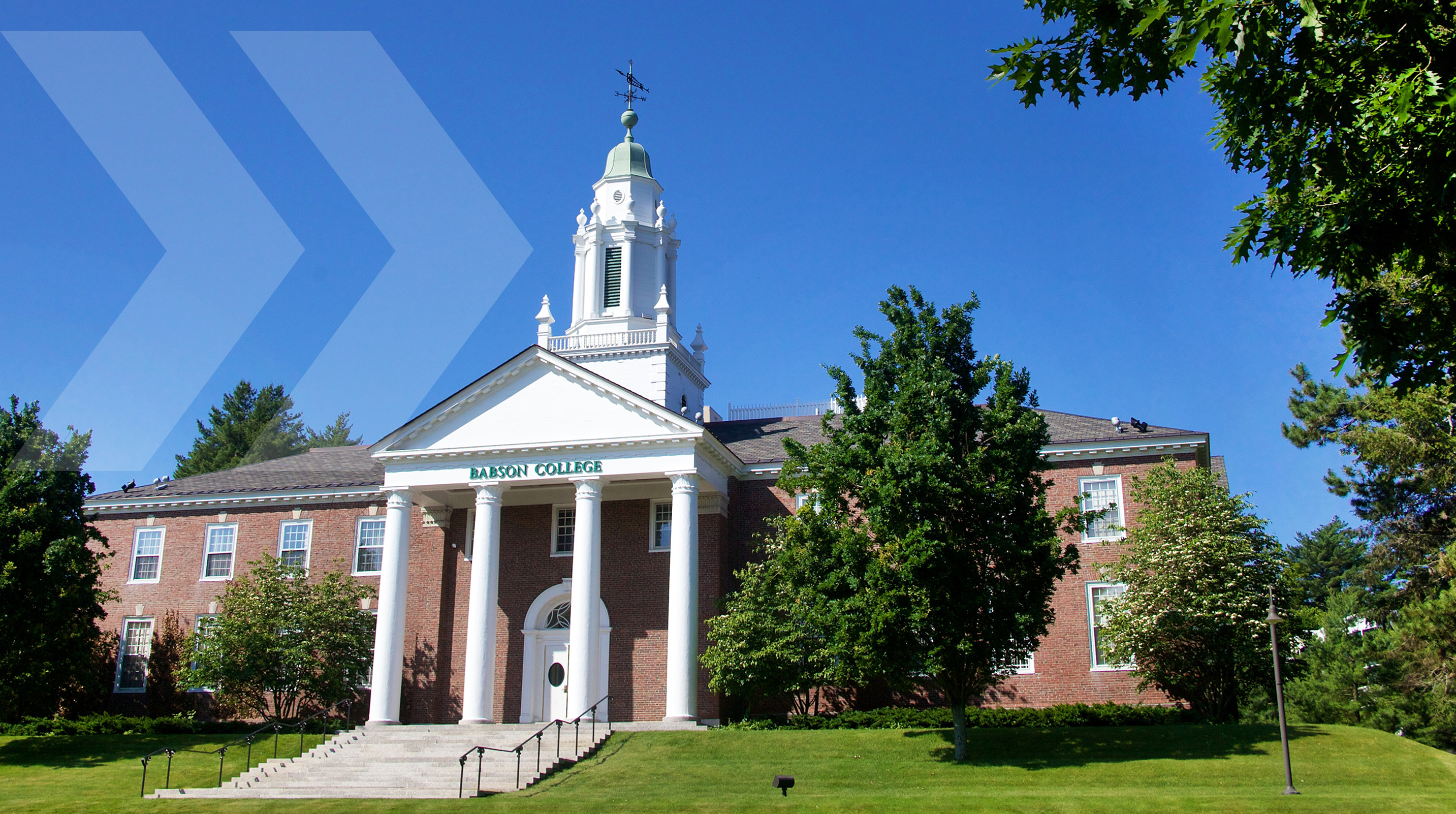People of Babson: Caitlin Capozzi

Caitlin Capozzi has rarely strayed far from campus life. After graduating from Syracuse, she spent a year working for her sorority, visiting colleges across the country. Capozzi landed at New York University, where she earned her master’s in communication and found her calling as a graduate assistant while working with NYU’s Fraternity and Sorority Life. A brief stint as a tech recruiter left her miserable and searching for “the one thing that brought me happiness.” So, in 2011, she returned to the campus lifestyle, joining Babson, where she is the new dean of students.
How does Student Life support students?
“We’re responsible for making sure that what happens outside the classroom complements what’s happening inside the classroom. For our students, some of the most critical things that they learn in college are how to make a good decision, how to hold yourself accountable, how to know who they are. Everything that happens outside the classroom on a college campus forces them to practice that. We also do a lot of work helping fuel students’ passions. Our students come to Babson with so many ideas and experiences, and our team gets to engage with a lot of what they do in their clubs and organizations, social projects, fundraisers, things like that. I think so much of what Babson teaches around entrepreneurship feeds right into what we try to do in student development, helping our students do good, learn about themselves, and make good decisions.”
What is a typical day like?
“Day to day, I feel like I’m always—even before the pandemic—switching gears constantly. I will be in one meeting, talking about the new Title IX regulations and gender-based misconduct and what that means for educating our students. And, then the next conversation could be with our partners in Dining, talking about food insecurity. … So much is focused on understanding what the students’ experience is, what they want their experiences to be, and how to adapt as a college to provide that to them.”
So much has changed during your time at Babson. Have the students changed?
“I think the main thing that’s stayed the same are the students, how intelligent our students are, how passionate our students are. If anything, I think students are even more prideful of Babson and their education here. The other thing that has remained constant is that we really are a relationship-based institution, and that part doesn’t go away during the pandemic. From when I started here in 2011 until today, our students will often come back to the College and want to visit the people that made a difference to them. They want to visit their faculty. They want to visit their class deans. They want to visit their club advisor. The students at Babson come back for the people, and they use that network and they build that out. Even during the pandemic, I don’t think that part goes away, and I think that’s what will actually sustain our community at this time.”
“We really are a relationship-based institution, and that part doesn’t go away during the pandemic. … I think that’s what will actually sustain our community at this time.”
Caitlin Capozzi, dean of students
When the College was forced to go remote and move students off campus for the remainder of the semester, what were the immediate things you needed to address?
“We needed to figure out how to do a couple of things. We needed to figure out how to put things in action that would mitigate the spread because we were primarily concerned with what happens if we get our first case on campus. What’s our quarantine plans? How are we going to make sure the other students are safe? Plus, we needed to figure out how to support our students in safely moving off campus. It was probably two or three weeks of work from our team on the ground, trying to empty out the residence halls, make sure students had the financial support they needed to do that, that students who couldn’t travel home had appropriate accommodations, including dining, which was completely taking a different shape.”
Once classes transitioned online, what were you doing to support students?
“We tried to focus on two things as a Student Life team. We were focused on community. How do we bring students together in a way that feels authentic and connected to the college? We have a team that works with our student Campus Activities Board, and they were doing book clubs and bingo and trivia, and navigating how to bring people together in that way. And, we focused on relationships. We made an effort to outreach to every student we knew and worked with. We sent emails, we set up Webex calls to listen, to understand their experience to try to provide resources wherever possible. Some of that was just connecting with students, understanding what challenges they were facing and then trying to help them find solutions. And, you could really only do that one on one.”
How did students respond and handle the spring semester?
“I think that our students are very resilient, and given everything that happened, I think they did the very best that they could. In the conversations I’ve had with students, they’re very realistic, but they want to come back, and that’s even knowing the safety guidelines won’t go away. But, to be able to come back to learn in this environment, to be on campus, they would rather be back and doing that. They understood the significance of what was happening, but they want to partner with us to figure out how to safely come back and be here on campus together.”
What do you find most rewarding about working so closely with students?
“I always joke that I loved college so much that that’s why I never left. College for me was such a transformational time from where I was in high school to where it launched me, so there is something so special about being a part of that transformation with our students. They come in so smart with such great ideas, and they navigate this place, then they do amazing things. And, I can say, ‘I knew them when,’ and I got to be a little part of their journey.”
What issues are most important to you?
“With the racial climate the way it is in this country, our students don’t just need our words or for their diversity to be celebrated when it’s convenient, they need action and they need change. Our students have been asking for it since I started at Babson, and there are things that I could point to that I believe are progress, but I don’t believe it’s enough. I really need my team to be committed to action and education on that topic, because I think one of the most important things is that every student should feel safe and that they belong, especially at an institution they call home for a short period of time. They should feel well. They should feel seen. So, I think that’s something that we need to step up.”
Posted in Community




